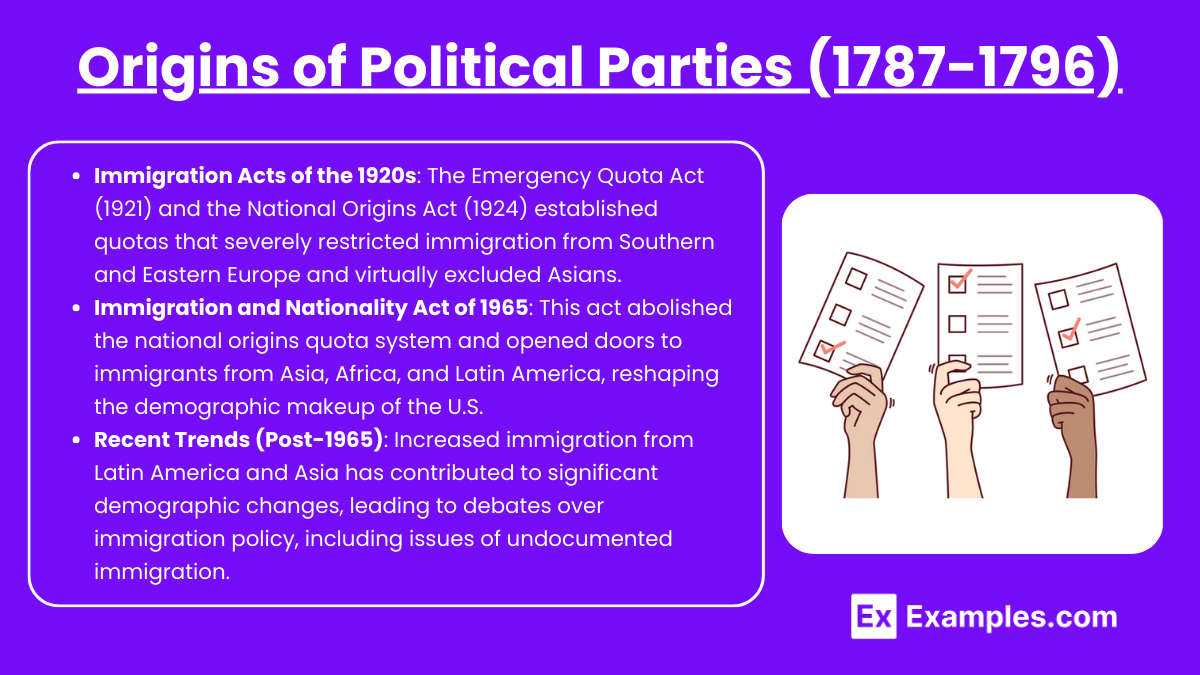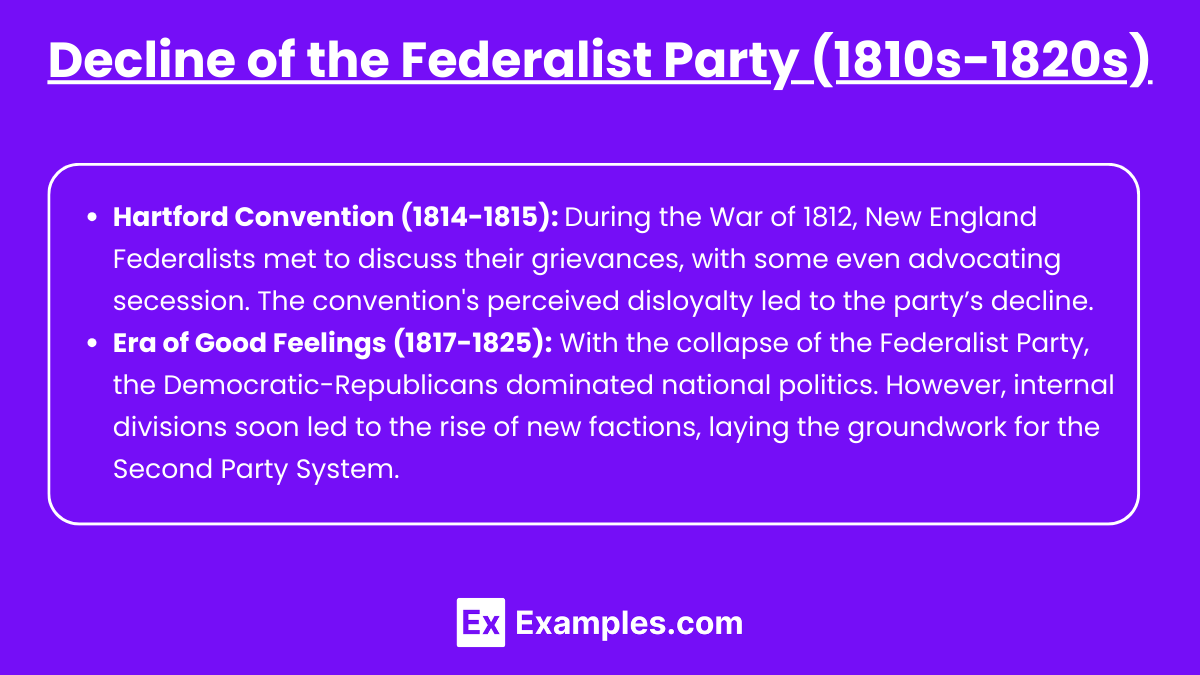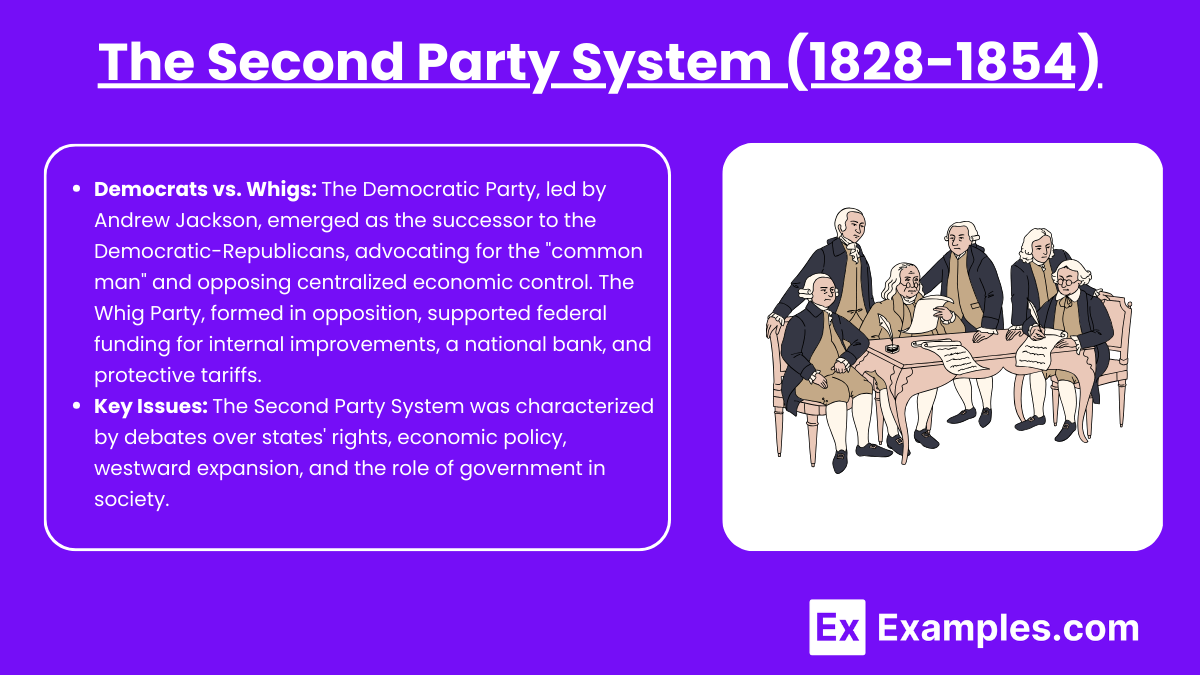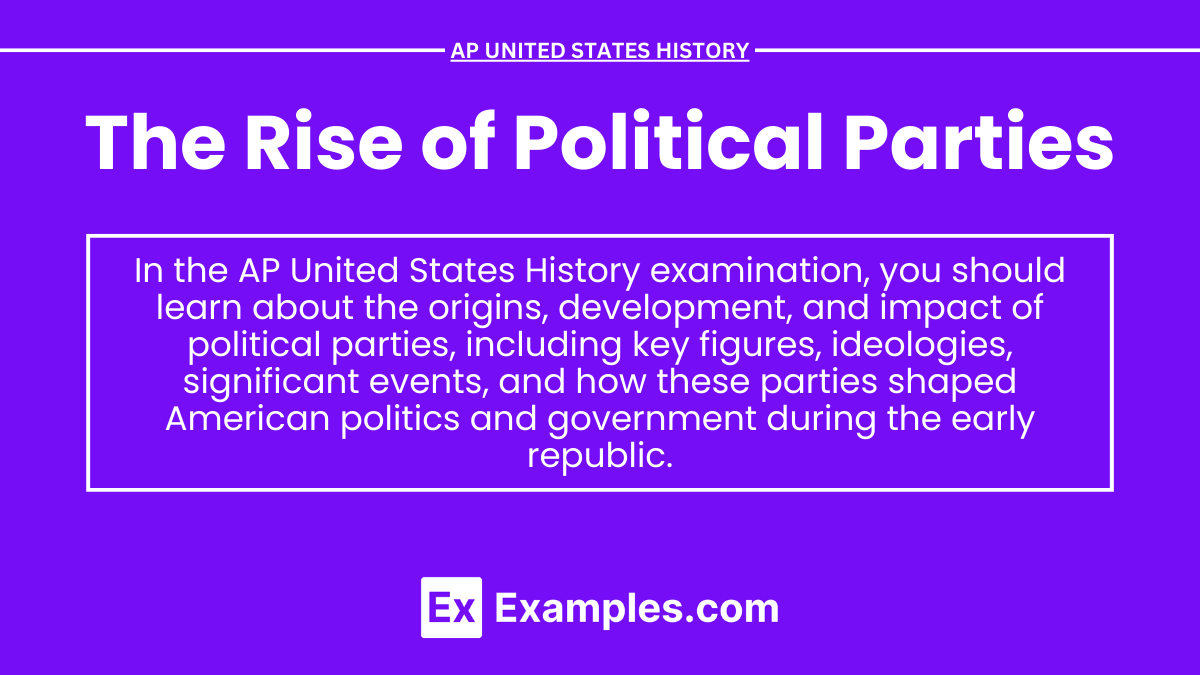In AP United States History, the rise of political parties marks a pivotal development in the early republic, reflecting deep divisions over how the new nation should be governed. Initially, the debate between Federalists, who supported a strong central government, and Democratic-Republicans, who advocated for states’ rights and limited federal power, set the foundation for America’s two-party system. These early political struggles over issues such as economic policy, foreign relations, and the interpretation of the Constitution not only shaped the nation’s political landscape but also established enduring principles that continue to influence American politics today.
Learning Objectives
In studying the rise of political parties for AP United States History, you will be expected to understand how early political divisions shaped the formation of the first party system. The significance of key figures, events, and policies that contributed to the Federalist and Democratic-Republican parties will be analyzed. You will also be able to evaluate how these political parties influenced governmental decisions, public opinion, and the development of the United States’ democratic processes.
Origins of Political Parties (1787-1796)

- Federalists vs. Anti-Federalists: The first significant political divisions in the United States emerged during the debates over the ratification of the Constitution. Federalists, led by figures like Alexander Hamilton and John Adams, supported a strong central government. Anti-Federalists, including Thomas Jefferson and Patrick Henry, favored states’ rights and were wary of centralized power.
- The First Party System: The Federalist and Democratic-Republican parties formed the first party system in the United States. Federalists advocated for a strong national government, close ties with Britain, and a loose interpretation of the Constitution. Democratic-Republicans, led by Thomas Jefferson and James Madison, promoted an agrarian-based economy, strict constitutional interpretation, and support for France.
Key Events and Issues (1790s-1820s)

- Hamilton’s Financial Plan: Alexander Hamilton’s plan to establish a national bank, assume state debts, and promote industrialization was supported by the Federalists but opposed by the Democratic-Republicans, who saw it as favoring wealthy elites and threatening state sovereignty.
- Jay’s Treaty (1794): The treaty with Britain, which sought to resolve lingering conflicts from the Revolutionary War, was favored by the Federalists but criticized by the Democratic-Republicans, who saw it as too conciliatory towards Britain.
- The Election of 1800: Known as the “Revolution of 1800,” this election marked the first peaceful transfer of power between political parties, from Federalist John Adams to Democratic-Republican Thomas Jefferson. It solidified the two-party system.
Decline of the Federalist Party (1810s-1820s)

- Hartford Convention (1814-1815): During the War of 1812, New England Federalists met to discuss their grievances, with some even advocating secession. The convention’s perceived disloyalty led to the party’s decline.
- Era of Good Feelings (1817-1825): With the collapse of the Federalist Party, the Democratic-Republicans dominated national politics. However, internal divisions soon led to the rise of new factions, laying the groundwork for the Second Party System.
The Second Party System (1828-1854)

- Democrats vs. Whigs: The Democratic Party, led by Andrew Jackson, emerged as the successor to the Democratic-Republicans, advocating for the “common man” and opposing centralized economic control. The Whig Party, formed in opposition, supported federal funding for internal improvements, a national bank, and protective tariffs.
- Key Issues: The Second Party System was characterized by debates over states’ rights, economic policy, westward expansion, and the role of government in society.
Examples
- Federalist Papers (1787-1788): A series of essays written by Hamilton, Madison, and Jay advocating for the ratification of the Constitution, reflecting the early Federalist viewpoint.
- Alien and Sedition Acts (1798): Federalist-sponsored laws that were seen as infringing on individual rights, leading to significant opposition from Democratic-Republicans.
- Kentucky and Virginia Resolutions (1798-1799): Responses to the Alien and Sedition Acts, asserting states’ rights to nullify federal laws, a key Democratic-Republican principle.
- Missouri Compromise (1820): Demonstrated the increasing sectionalism that would eventually contribute to the breakdown of the Second Party System.
- Election of 1824 (“Corrupt Bargain”): Led to the splintering of the Democratic-Republican Party and the emergence of the Jacksonian Democrats and the National Republicans (later Whigs).
Multiple-Choice Questions (MCQs):
1. Which of the following was a primary reason for the decline of the Federalist Party?
- A. Opposition to the Louisiana Purchase
- B. The outcome of the Hartford Convention
- C. Support for the War of 1812
- D. Advocacy for states’ rights
Answer: B. The outcome of the Hartford Convention
Explanation: The Hartford Convention’s perceived disloyalty during the War of 1812 led to the Federalist Party’s decline as it was seen as unpatriotic.
2. The Democratic-Republican Party, led by Thomas Jefferson, was primarily characterized by its:
- A. Support for a strong central government
- B. Advocacy for an industrialized economy
- C. Emphasis on states’ rights and an agrarian society
- D. Alliance with Britain over France
Answer: C. Emphasis on states’ rights and an agrarian society
Explanation: The Democratic-Republicans favored limited federal power and supported an agrarian-based economy, aligning with the interests of farmers and the rural population.
3. The election of 1800 is often referred to as the “Revolution of 1800” because:
- A. It marked the first violent overthrow of a government in U.S. history
- B. It resulted in the end of the Federalist Party
- C. It led to the first peaceful transfer of power between political parties
- D. It was the first time a president was impeached
Answer: C. It led to the first peaceful transfer of power between political parties
Explanation: The election of 1800 was significant because it demonstrated that political power could be transferred peacefully between opposing parties, setting a precedent for future elections.


